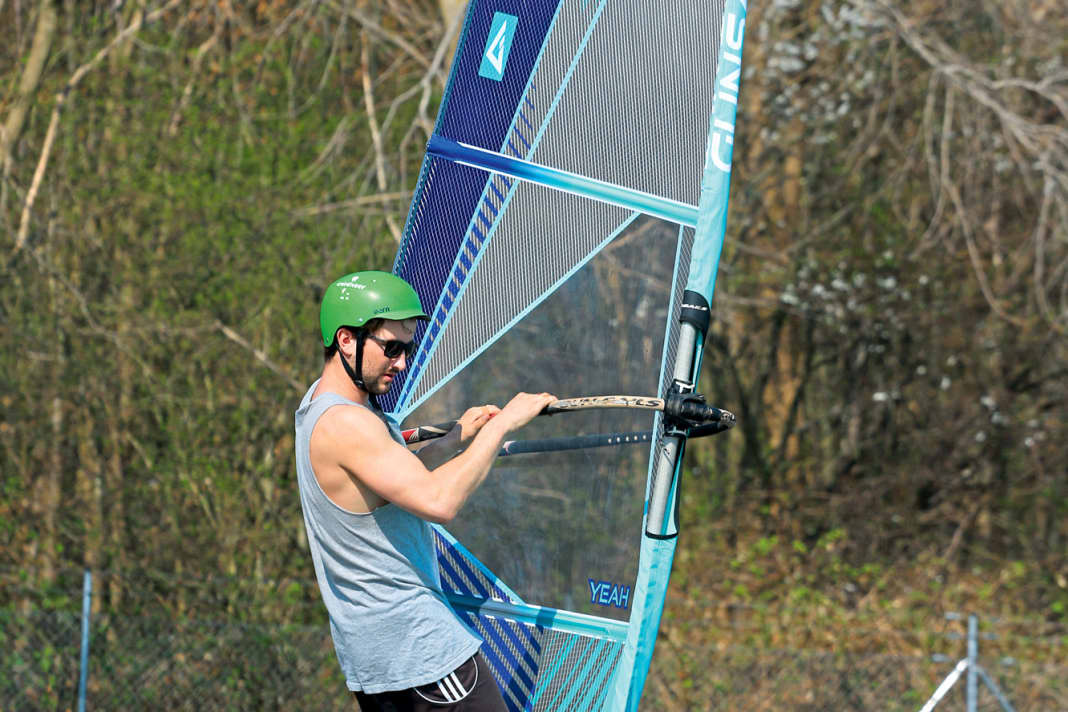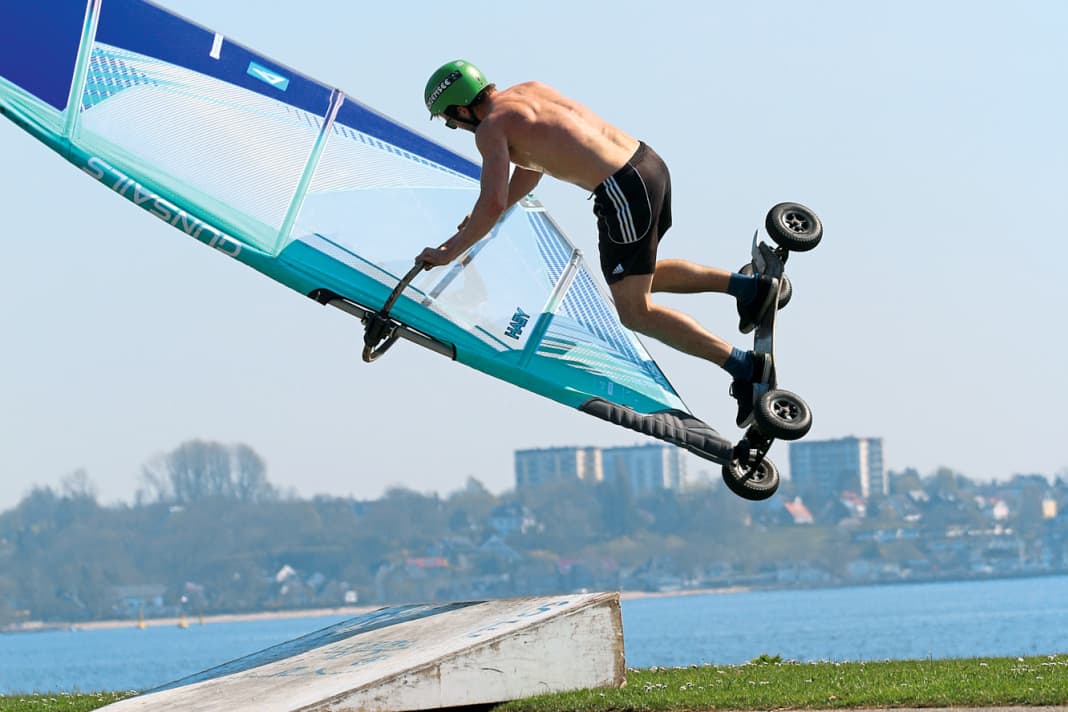





As a young boy, Anton Munz also dreamed of the sea - because his home, Lake Chiemsee, is quite a doldrums. But instead of resigning himself to his fate, Anton took up windskating. "I could do most of the manoeuvres on the windskate long before I did them on the water," says Anton. When I then moved to Kiel, I learnt windsurfing as if in fast motion, simply because I was already familiar with the movements and I had got the necessary sailing feeling from skating."
Anton quickly counters the prejudice that windskating is only for a few young, crazy freestylers: "Windskating is almost always possible. You can learn something at every level and for every discipline, and that in two wind forces: first jibes, sailing tricks through to crazy freestyle moves."
What material for windskating?
The cheapest way to start windskating is with a longboard. Drill a hole for the mast base plate just in front of or behind the front axle using an 8 mm drill bit. If possible, choose wheels that are as large and soft as possible - they have more grip and small stones don't immediately cause you to hit the brakes. Anton advises against short skateboards altogether: "Too uncontrollable, too difficult to ride," is his experience.
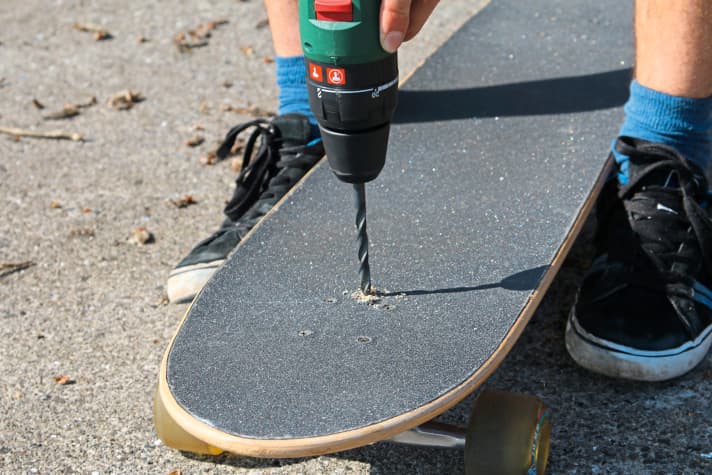
If you are looking for the ideal solution, Anton recommends a mountain board. These were actually designed for landboarding with a kite, but are also suitable for windskating if you buy or build an adapter plate. Loops then provide grip for jumps, but also give you security when jibing. To get started, you can of course also ride such a board without straps - this avoids riding in switch stance and allows you to change your foot position in manoeuvres as normal. The largest possible air wheels offer maximum grip and allow you to take trips onto the grass or a bumpy dirt track. New price: from 200 euros.
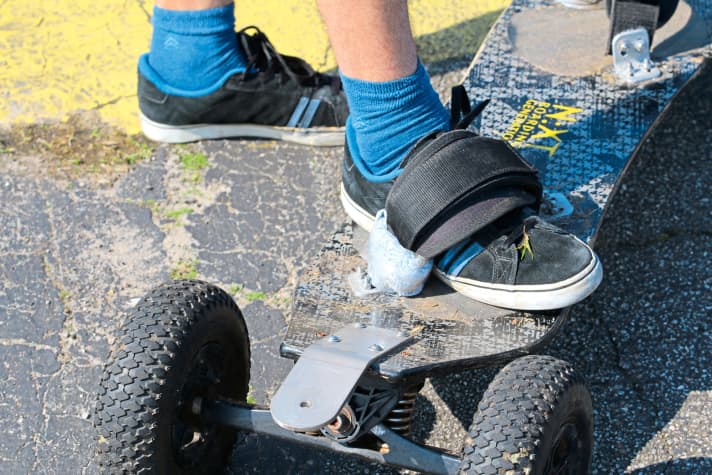
With a sail between 4.5 and 5.2, you combine the best handling and sufficient pull for riding on tarmac. Anton assures us that the sail and mast take little damage, but the fork suffers. It's best to use an old aluminium fork.

Location & wind for windskating
Your surf spot can now be anywhere! A car park at Aldi or a dirt track - the main thing is that there is some space and wind. If you're practising on a skateboard, make sure there aren't too many stones in the way and that the tarmac isn't wet. As soon as you can feel the wind in your face, you're ready to go, five to twelve knots are perfect with a 5.0 sail. With more wind it gets hairy, but then the fun on the water begins.
Security
"In many years of windskating, I've never injured myself," says Anton, explaining his health record - which is actually incredible given Anton's repertoire of tricks. Nevertheless, he doesn't do without a helmet and, to get started, standard knee and elbow protectors from the skating world wouldn't do any harm.
Windskating technique
Basic 1: Turn the board over
As with windsurfing, you want to start on a half-wind course, i.e. the course across the wind. The first task you will face: Turn the board round.
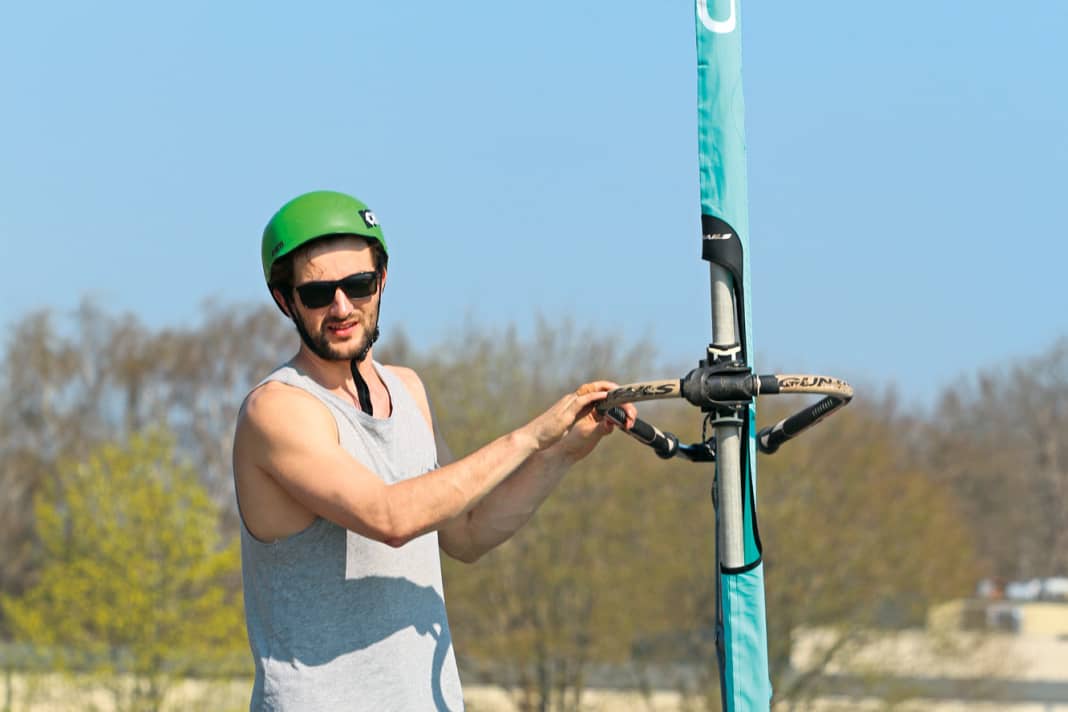





The following principle is important when turning round: Never turn the board with the bow or nose to windward! The counter-pressure in the sail becomes strong in stronger winds - you then risk being pushed backwards and landing on the tarmac.
Basic 2: Alignment, starting & braking
As already mentioned, you want to start on a half-wind course. If the board is positioned correctly, your sail will be at exactly a 90-degree angle to the board, held only by the mast.
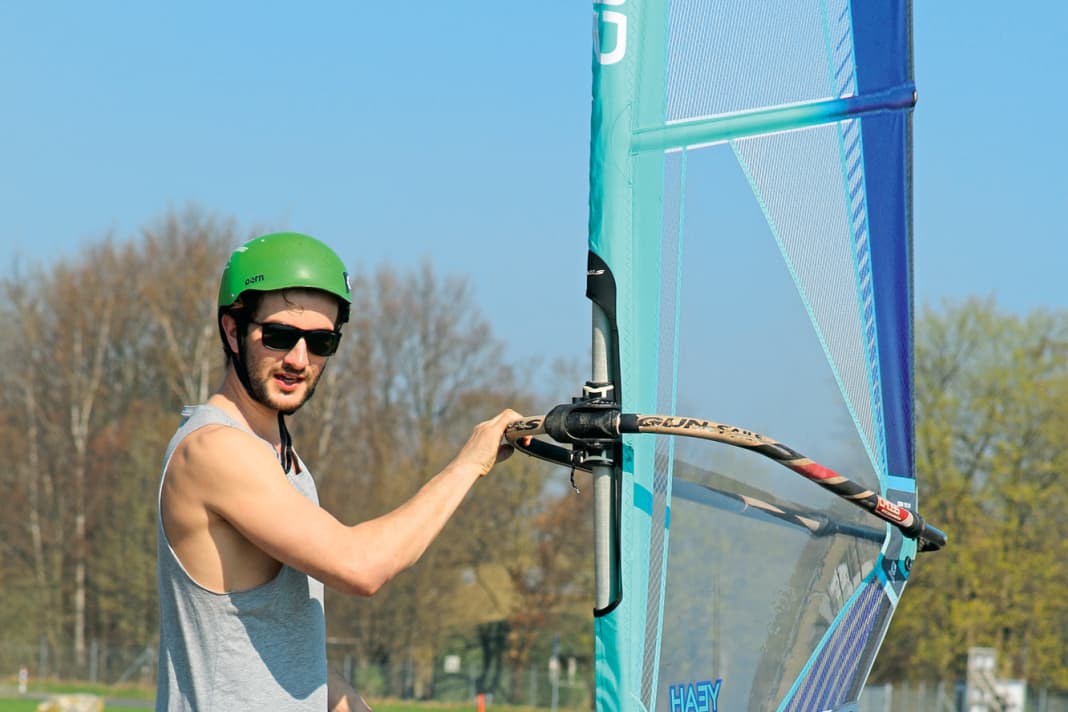



If there is little wind, a few pumping strokes - or, if you have skate experience, a turn with the front leg - can help you reach some basic speed. As your speed increases, the relative wind and therefore the pull in the sail also increases due to the airstream - which means that you can become incredibly fast even with little wind.
Basic 3: Slalom driving
In general, manoeuvres to windward (e.g. helitack) as well as to leeward (e.g. jibes) can be performed when windskating. Only tricks where you change the side of the sail at the front around the mast (e.g. fast tacking) are only possible to a limited extent due to lack of space. To prepare for the first manoeuvres, Anton recommends first getting a feel for the board, the turns and the grip of the rollers while slaloming.
